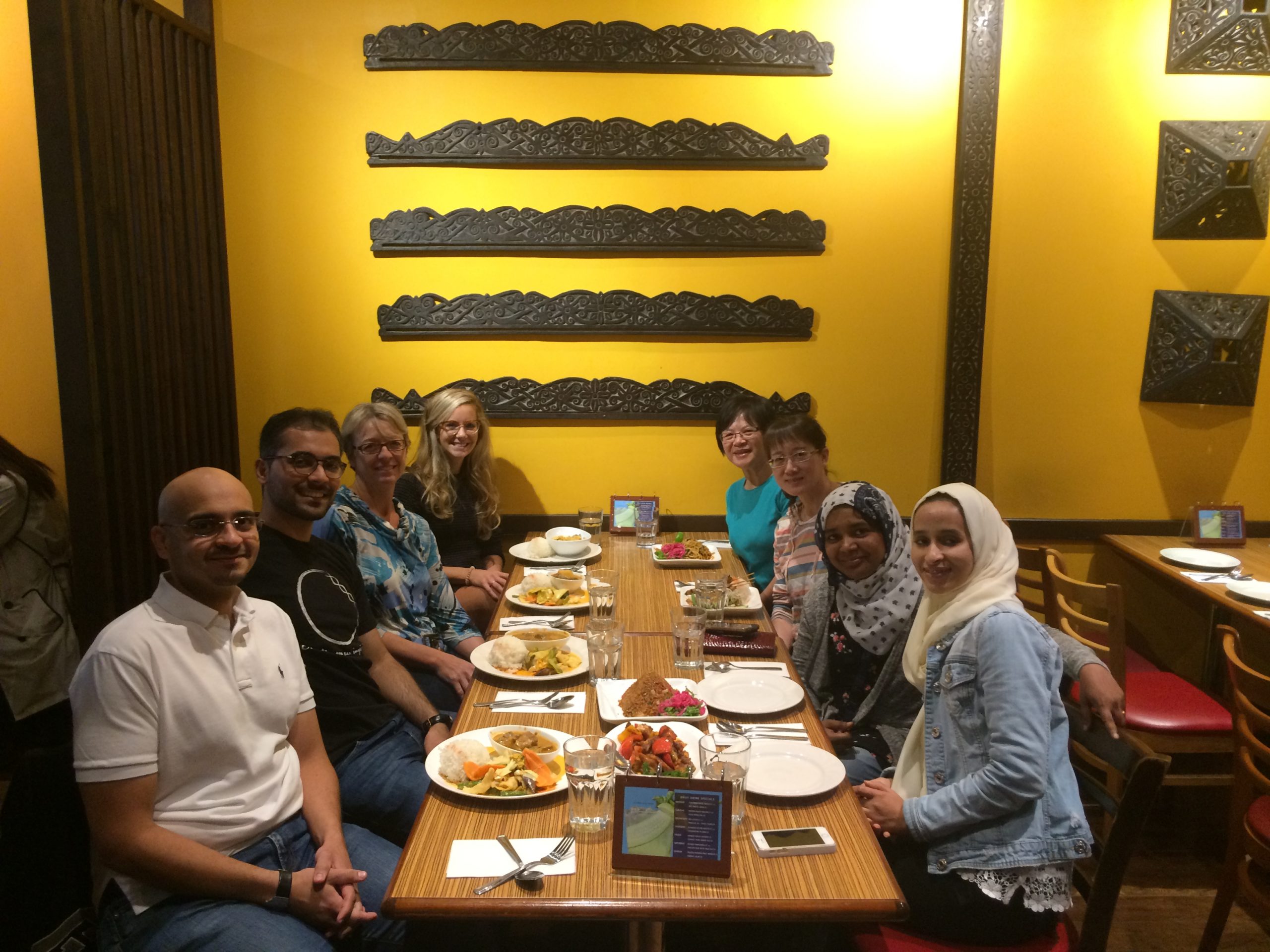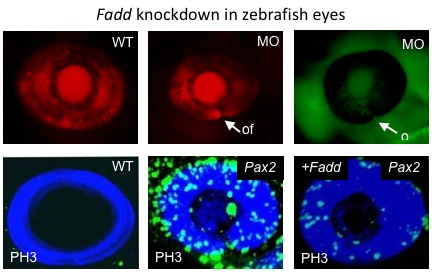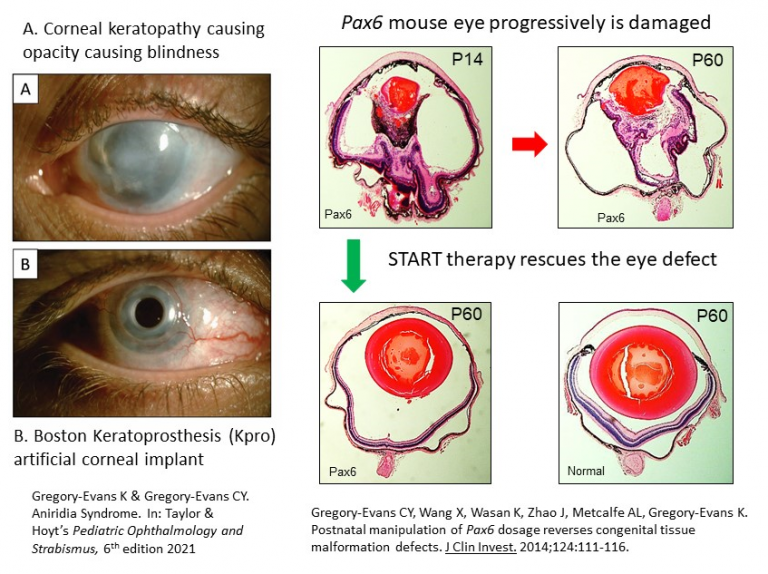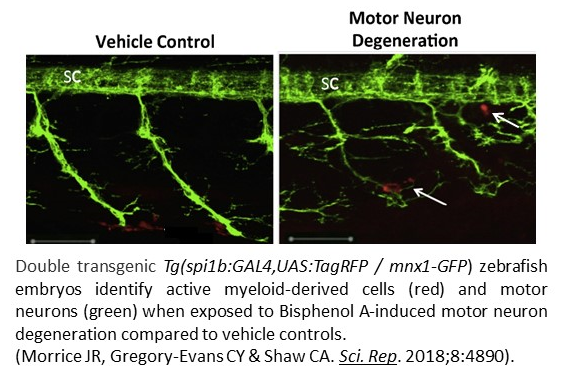
CGE Lab Photo 2017
The Gregory-Evans Neuro-Development Lab undertakes studies in ocular and neuronal development, in zebrafish, lizard and mouse models of eye disease. For Professor Gregory-Evans’s up-to-date publication list, please see the following links:
Cheryl Gregory-Evans – Google Scholar
Gregory-Evans C – Search Results – PubMed (nih.gov)
Ocular coloboma
Role of Fadd in optic fissure closure. Fadd is an adaptor protein involved in the induction of cell death. This project looks at the role of cell death in normal optic fissure morphogenesis and what happens when the balance between cell death and cell proliferation is disrupted. We are using morpholino gene knockdown and cell death/proliferation assays to investigate these processes.
Identification of the downstream targets of the Pax2 transcription factor. Although mutations in many different transcription factors cause ocular coloboma, how they lead to failure of optic fissure closure at the cellular level is unknown. This projects is aimed at finding the transcriptional targets of Pax2 and to determine how they influence epithelial fusion at the optic fissure, using techniques such as ChIP-seq and expression profiling in the pax2-deficient zebrafish model.
Modelling human chromosomal deletions and insertions that cause multiple tissue fusion defects. Chromosomal abnormalities in patients with multiple fusion defects such as coloboma, neural tube defects, palate/lip defects and ventricular septum defects usually affect more than one gene. To determine which of the genes in a deletion is important for example, we use antisense morpholino knockdown to see which genes cause a fusion defect.

In wildtype (WT) zebrafish eyes the optic fissure is closed at 48 hpf, but when Fadd is knocked down using morpholinos (MO) the optic fissure is still open at 48 hpf. In WT eyes there is little PH3 labelling (a proliferation marker) but in the Pax2 mutant zebrafish, there is an open fissure and excessive proliferation. When Fadd mRNA is injected into Pax2 -deficient embryos the optic fissure closes and the proliferation is markedly reduced, demonstrating that Fadd is a direct downstream target of Pax2 (Viringipurampeer IA et al, 2012. Hum Mol Genet . 21:2357-2369).
Drug screening in zebrafish with retinal dystrophy
The etiology of Pde6c mutation causing cone photoreceptor cell death. To understand how mutations in PDE6C cause achromatopsia (complete colour blindness) in humans, we are investigating which cell death pathways are activated in cone cells. The Pde6c zebrafish model is being used to test novel therapies for this disease.

Small molecule therapeutics in zebrafish models of anterior segment dysgenesis.
Aniridia
Aniridia syndrome is a rare multisystem condition presenting at birth with bilateral complete or partial iris hypoplasia linked to other features including congenital cataract, foveal hypoplasia, ptosis and nystagmus. The prevalence of aniridia syndrome is between 1:40,000 – 1:72,000 with no reported influence of gender or race. The condition is caused by heterozygous loss-of-function mutations or deletions in the PAX6 gene or in nearby regulatory elements that control PAX6 expression. Ophthalmic management of aniridia is challenging due to its progressive nature and frequent complications (corneal keratopathy, glaucoma, aniridia fibrosis syndrome) requiring intensive, life-long care.
The Pax6-Sey model of aniridia carries a nonsense mutation in the Pax6 gene causing the mice to be blind at birth. We have used a small molecule drug (Ataluren™) in a postnatal nonsense suppression therapy approach to treat the visual defects. Not only did the drug reverse the ocular pathology it restored the electrical and behavioural responses back to normal. This lead to a multicentre clinical trial for Ataluren in aniridia patients.
http://news.ubc.ca/2013/12/20/ubc-vch-scientists-use-drug-to-repair-a-rare-birth-defect/

Amyotrophic lateral sclerosis
Sporadic amyotrophic lateral sclerosis (sALS) is a fatal neurodegenerative disease with rapidly progressing paralysis leading to death from respiratory failure within 3-5 years from initial diagnosis. Despite decades of research the etiology underlying sporadic ALS remains unexplained and treatment options are limited. The majority of sALS cases have unknown etiology, but a combination of both gene and environmental factors are likely driving pathogenesis. We are using the zebrafish model to determine how neurotoxic agents such as lead (Pb) and Bisphenol-A (BPA) cause neurodegeneration. In addition we use analysis of ‘Big Data’ to identify genetic risk factors for sALS and characterize them in the zebrafish.

Past & Present Lab Members
Graduate students
Jessica Morrice (2017-present)
Vahitha Nizamudheen (2014-present)
Hani Bagheri (2013-2017)
Naif Sannan (2012-2018)
Elham Mohammadi (2011-2018)
Nir Grossman (2008-2010)
Mariya Moosajee (2005-2009)
Merrin Tulloch (2003-2008)
James Blackburn (2000-2004)
Helena Vieira (2000-2003)
Lindsay Bibb (1998-2002)
Post-doctoral Research Associates
Ishaq Viringipurampeer (2010-2012)
Xia Wang (2010-2018)
Jiang Ping Zhang (2010-2011)
Matthew Williams (2003-2005)
Matthew Hodges (1999-2002)
Emma Tarttelin (1999-2002)
James Bellingham (1998-2000)
Research assistants
Xianghong Shan (2009-present)
Kelvin Po (2009)
Jookyung Justin Yoon (Co-op student 2011)
Bogdan Dascalu (Medical student 2010)
Collaborators
International:
Dr. David Cobrinik (Memorial-Sloan-Kettering Cancer Centre, NY, USA)
Dr. John Ngai (UC Berkeley, CA, USA)
Dr. Paul Denny (Mammalian Genetics Unit, UK)
National:
Dr. Patrice Eydoux (Women’s and Children’s Hospital, Vancouver)
Dr. Joy Richman (Faculty of Dentistry, UBC)
Dr. Kevin Gregory-Evans (Dept of Ophthalmology UBC)
Dr. Orson Moritz (Dept of Ophthalmology UBC)
Dr. Christopher Sahw (Dept of Ophthalmology)
Dr. Kishor Wasan (UBC)